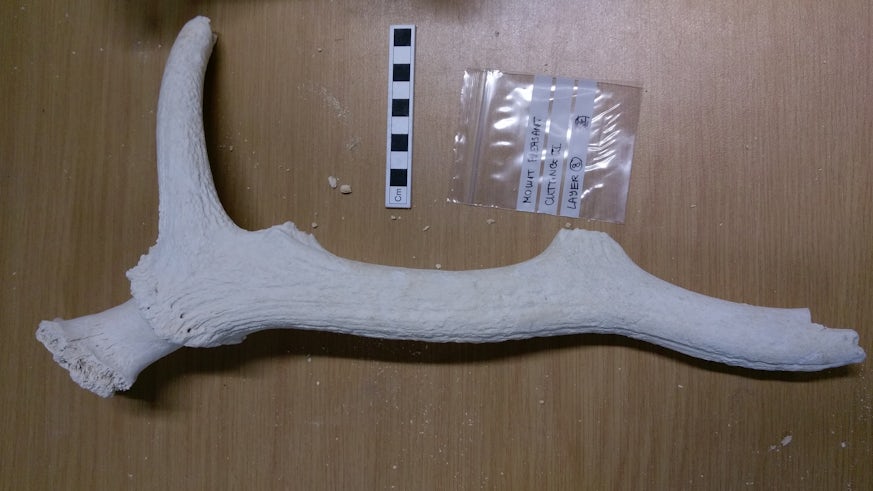Neolithic construction boom led to large-scale mega henges being built across southern Britain, research suggests
5 November 2020

Frantic building activity around 2500 BC resulted in massive ceremonial structures appearing in southern Britain, a study from Cardiff University says.
Academics used the latest scientific methods to re-examine the remains of the Mount Pleasant ‘mega henge’, a large prehistoric enclosure, located just outside Dorchester in Dorset. This is the first time accurate dating has been obtained for the major late Neolithic monument and offers new insights into the incredible speed at which construction took place.
Inside Mount Pleasant henge was a large, fenced enclosure and a complex concentric timber and stone monument. On top of the bank was built a great mound. The new analysis shows that all these different elements were completed in less than 125 years – much less time than previously thought. The data shows the site was built only 150 years or so before the arrival of new people from continental Europe, who brought the first metals and different pottery as well as new ideas and religious beliefs.
Built around 2500BC, Mount Pleasant is one of five known mega-henges in southern England of the same period. Other sites include Marden, Durrington Walls near Stonehenge, Avebury, which are all in Wiltshire, and Knowlton in Dorset. Stonehenge was also built at this time. The henges were significant ceremonial sites where people probably gathered for feasting and rituals, sometimes travelling over long distances to get there.
Susan Greaney, a PhD student at Cardiff University’s School of History, Archaeology and Religion, said: “This new dating really helps us understand the pivotal 2,500 BC period. The picture that is emerging is that an explosion in building activity was behind these large and labour-intensive monuments being constructed across southern England, and perhaps also further afield.
“The building of Mount Pleasant would have involved a huge number of people – digging out the enormous ditches with simple tools like antler picks. Although the construction of the various parts took place in several phases, with successive generations working on its construction, all the work was concentrated within just over a century.”

Researchers took samples from finds made during excavations on the site in 1970 and curated at the Dorset County Museum, including antler picks, pieces of charcoal and human bone. These samples were radiocarbon dated at laboratories in Oxford, Belfast, Glasgow and Zurich to obtain precise date estimates. These were then refined and combined using a statistical technique called Bayesian analysis. This method allowed the team to combine the dates with information from the archaeological excavation such as the context and layer of each sample and its material, to more precisely estimate the date and sequence of construction.
Greaney said: “What’s still not clear is why these monuments were built in the first place. Were people building these monuments as a ‘last hurrah’ because they could see change coming? Or did the effort and labour of building these monuments lead to a rebellion, a collapse in belief in the leaders or the religion, that created a vacuum in which new people could come in from the continent? Part of the central stone monument at Mount Pleasant appears to have been broken up at this time – was it destroyed during a time of unrest?”
Dr Peter Marshall, of Historic England said: “This research shows the importance of archaeological collections stored in museums. Even though the site was excavated in 1970-1, it has still been possible to go back to the archive and apply new scientific techniques to old material.
“As archaeological practices evolve, the value of these museum collections and the importance of their long-term preservation cannot be under-estimated.”
Tempo of a Mega-henge: A New Chronology for Mount Pleasant, Dorchester, Dorset, is published in Proceedings of the Prehistoric Society and available to view here.
Share this story
The School allows the brightest and best to explore and share their passion for past societies and religious beliefs, from prehistory to the present day.



